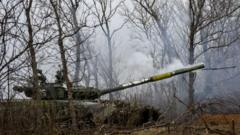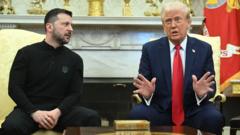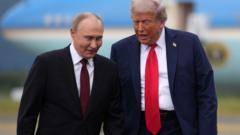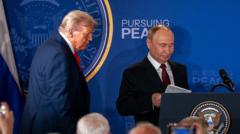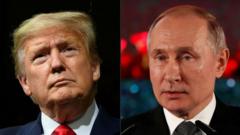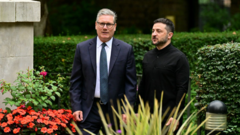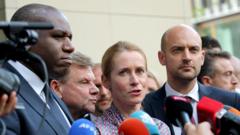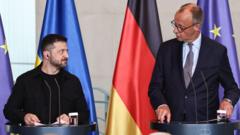A state funeral in Tehran commemorated around 60 military figures and scientists killed in recent clashes with Israel. While the Iranian leadership calls for unity, international tensions surge with U.S. involvement and controversial comments from President Trump regarding Iran’s future.**
State Funeral in Iran for Victims of Israel Conflict Amid Rising Tensions**

State Funeral in Iran for Victims of Israel Conflict Amid Rising Tensions**
Iran mourns military and scientific leaders lost in conflict with Israel, as internal and external tensions escalate.**
A solemn state funeral took place in Iran for approximately 60 victims, including high-ranking military leaders and nuclear scientists, who perished during the recent 12-day conflict with Israel. The ceremony, held near Tehran’s Enghelab Square, saw large crowds gather to pay their respects, with coffins draped in the national flag and portraits of the deceased prominently displayed. This tragic chapter in Iran's ongoing struggle culminated in a ceasefire earlier this week following U.S. airstrikes targeting crucial Iranian nuclear facilities.
Residents clad in black chanted mournful slogans, held Iranian flags aloft, and displayed photographs of the fallen as part of a government-organized media campaign urging public participation. Transportation for mourning attendees was facilitated with free bus and metro services, and government institutions closed for the day to honor the dead. Notable figures among those laid to rest included Mohammad Bagheri, chief of staff of Iran's armed forces, whose family also lost their lives in the strikes.
The conflict has claimed 627 Iranian lives according to government statements, while Israeli sources report 28 fatalities due to missile attacks from Iran. In the wake of this violence, Iranian authorities and military leaders took a united front, presiding over the funeral, which was attended by President Masoud Pezeshkian and military chief Hossein Salami, who voiced the need for resilience against perceived aggression.
Amplifying the tensions, U.S. President Donald Trump indicated the possibility of further military action against Iran if nuclear developments are deemed threatening. In a White House briefing, Trump described Iran in ruins and criticized Supreme Leader Ayatollah Ali Khamenei for his claims of triumph over Israel amidst the conflict. He further asserted he had spared Khamenei from a potentially deadly strike, directly challenging Iran’s leadership.
Iran's Foreign Minister Abbas Araghchi responded to Trump's remarks by emphasizing the importance of respectful dialogue and warning that the Iranian public is sensitive to perceived threats. Amidst these exchanges, the head of the International Atomic Energy Agency (IAEA) conceded uncertainty regarding the extent of damage inflicted on Iran's nuclear capabilities, suggesting military action is not a solution to curtailing the country’s nuclear ambitions.
The landscape in Tehran is changing, as citizens grapple with the reality of mourning and the looming threat of renewed hostilities. While discussions of future frameworks for peace continue, the atmosphere remains charged, with many questions hanging over the future of U.S.-Iran relations and stability in the region.




